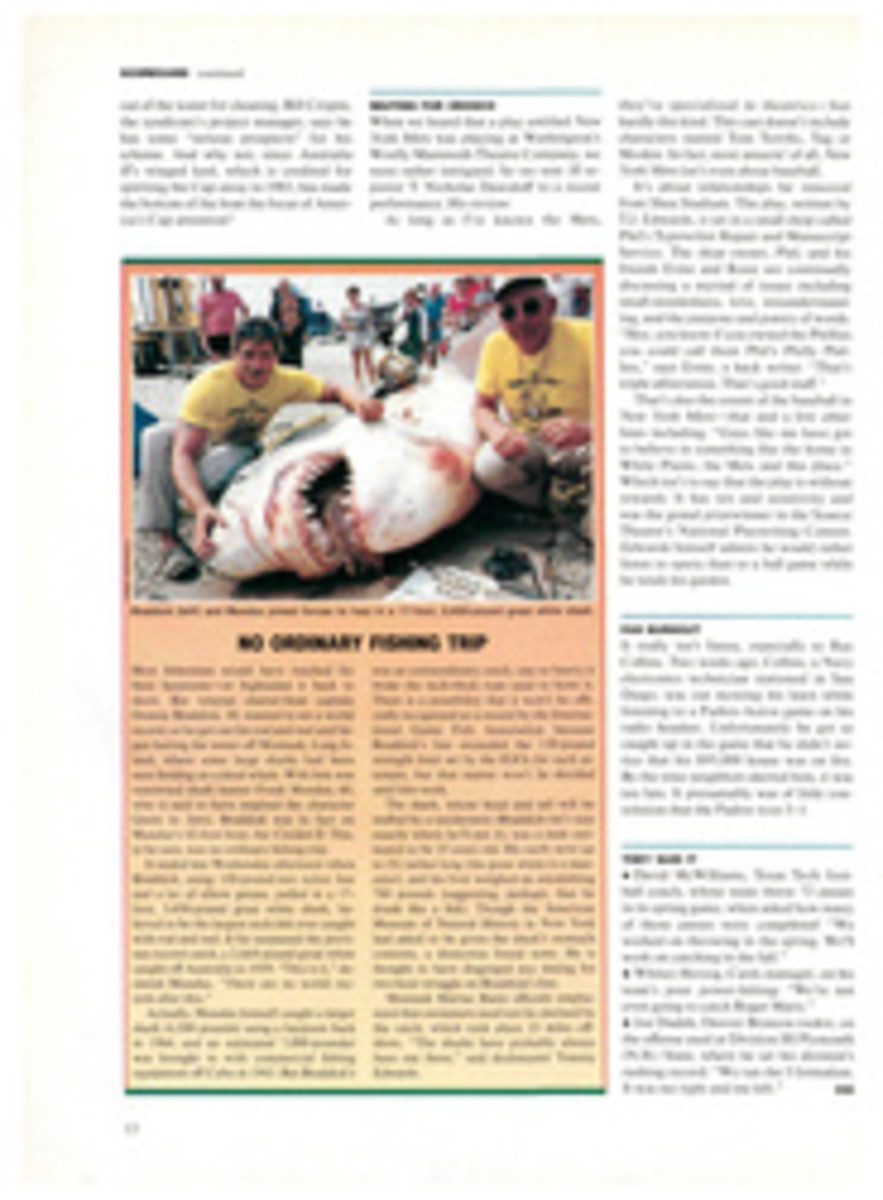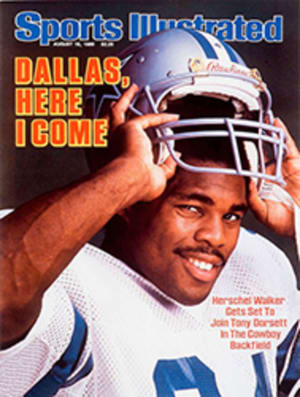
A BACKSTRETCH SEAMSTRESS SEWS RACING SILKS RIGHT DOWN TO THE WIRE
On the day before the 1985 Preakness at the Pimlico Race Course in
Baltimore, trainer Butch Lenzini found he had left horse owner Brian
J. Hurst's racing colors back in Kentucky. Needing a new set of
silks, Lenzini phoned Chloe Vaughan with a last-minute order. By
eight the next morning she had a silver and black jacket ready for
publicity photographs. And at 5:42 that afternoon Hurst's Eternal
Prince came in third in the Preakness -- quite literally in flying
colors.
Vaughan makes jockeys' racing silks. At 4 ft. 11 3/4 in. and 90
pounds, 31- year-old Vaughan could be mistaken for a jockey. When
she stands in the colors room at Laurel (Md.) Race Course trading
good-natured insults with trainers and track custodians while
searching the racks of silks for sets she made herself, Vaughan
looks as though she was born on the backstretch.
The business of Stitches by Chloe is conducted wherever Vaughan
runs into someone who needs a set of colors or a blinker hood or a
girth cover. Though this happens as often in the parking lot as in
the racing secretary's office, her official office and showroom is a
26-foot trailer stationed at Pimlico. Another trailer, at Laurel,
serves as a workshop and warehouse for Vaughan. Whereas horse
owners once had to send out to more distant seamstresses for a rush
order on a new set of colors, now Vaughan and her 22 part-time
helpers can stitch them up overnight in the Laurel trailer.
Chloe Vaughan has been around horses all her life. She grew up on
a 250-acre farm in Columbia, Tenn., 40 miles outside Nashville, where
the Vaughans grew alfalfa and raised horses.
For three years she exercised horses at half a dozen East Coast
tracks, including Saratoga. In 1978 she went to England and worked
for William Hastings-Bass, a trainer for the Queen. The following
year, back in the States, she married one of her Hastings-Bass
co-workers, British jockey Stewart Young. A respected jockeys'
agent, who had seen Vaughan ride, told her she could probably pull in
$150,000 her first year as an apprentice jockey. As a child Vaughan
had dreamed of being a jockey and was flattered by the agent's faith
in her, but one jockey in the family seemed enough. Besides, Vaughan
wanted something all her own.
Her silks business just sort of evolved. ''As an exercise rider my
day started at 5:30 a.m.,'' Vaughan says, ''but I was done by 10, so
I had plenty of time for other things.'' She began stitching up
saddlecloths and colors, first for friends and then for customers.
After four years of part-time work, she bought a trailer and hung out
a shingle. Before long, Vaughan had more work than she could easily
handle.
Vaughan is reluctant to reveal her annual volume of business (''I
just want people to know I work hard; there are already enough
inflated ideas around here about what I make''), but she does admit
to having a file of more than 2,800 patterns for individual sets of
colors. And at $75 to $165 per jacket, plus $16 for a helmet cover,
it adds up.
In the early days of horse racing, colors were made of real silk
and fastened in the front with fancy buttons. But with silk $40 a
yard wholesale, today's silks are made out of nylon -- inexpensive,
lightweight and fast drying -- and are fastened with Velcro strips.
Rules about jockeys' dress, usually laid down by state racing
commissions, differ somewhat across the country, but every state
with racing has some rules and a lot of conventions: For example, the
fact that colors are inheritable is a convention, not a rule. In New
York, where The Jockey Club holds sway, there are more rules than you
can shake a crop at. While four different colors, for instance --
none of them can be navy blue, which is easily confused with black --
are permitted on any one garment, only two are allowed on the bodice
and two more on the sleeves. New York regulations also specify what
symbols -- stars, diamonds, lightning bolts, chevrons, etc. -- are
allowed and how wide stripes can be.
But almost anything goes in Maryland, as long as it doesn't
duplicate colors already registered. Vaughan's customers can order
all sorts of silks, from all silver-lame to a set featuring a big red
heart with a monogram in the center and small red hearts sprinkled
over the sleeves.
In her three years in business Vaughan has made some important
friends, among them Charles (Chick) Lang, executive vice-president
and general manager of Pimlico and a power broker in the world of
racing. Lang took a liking to Vaughan when, three Preaknesses ago,
she pitched in and worked all night mending small rips and frays in 6
of the 10 colors entered in the race the next day.
Still, Vaughan misses working with horses. ''What I'd really like
to do,'' she says a little wistfully, ''is train.'' END
Photo(s):
ANDREW POPPER Among the silks in the colors room at Pimlico are many Vaughan has sewn herself.

